There are many different methods for using the abundance of pumpkins and squash in your garden, just in time for winter. We're thinking soups, sauces, toppings for meat dishes and much more...
Chef Jef shared with us a simple and delectable recipe for a squash puree you'll be eating straight out of the bowl!
When selecting a squash or pumpkin to make your puree from, keep in mind that not all pumpkins and squash are created equal. Small pie pumpkins, such as the Winter Luxury are the perfect choice for a sweet or savory puree. Large Jack-O-Lantern pumpkins (such as the Howden shown below), however, are NOT ideal for creating puree. Pie pumpkins are smaller and more dense with a smooth velvety texture that is fiber free with pure pumpkin flavor. Decorating or Jack-O-Lantern pumpkins like Howden have a bland, watery, fibrous pulp. They can be used but are not optimum for culinary purposes and better serve for decorating carving and livestock feed. The Galeux D' Eysines, Small Sugar, Gold Nugget, and Table Princess Acorn squashes are all wonderful choices to create a flavorful puree.
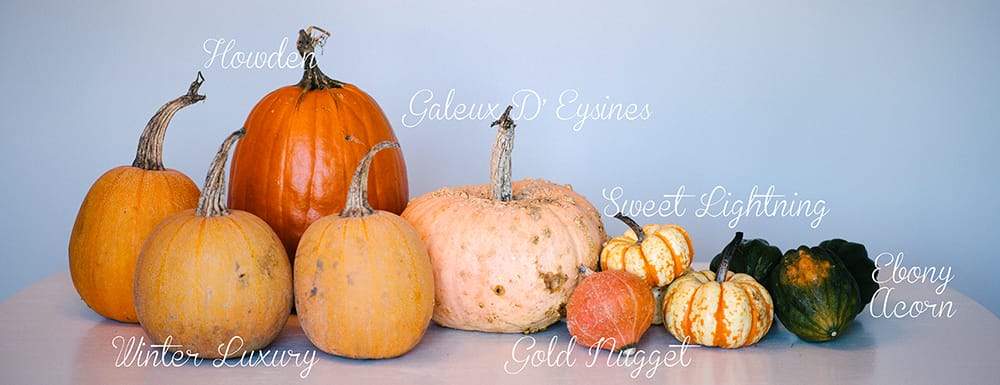 A little bit of history on pumpkins and squash before we start! Pumpkins are a fruit (more specifically a berry) that have seeds and pulp that is produced from a single ovary (the female pumpkin flower). Contrary to popular belief, most commercial canned pumpkin is made from winter squash, where squash tends to have a sweeter, stronger flavor that gives the soups, pies, and breads we make with it the flavor we all know and recognize!
A little bit of history on pumpkins and squash before we start! Pumpkins are a fruit (more specifically a berry) that have seeds and pulp that is produced from a single ovary (the female pumpkin flower). Contrary to popular belief, most commercial canned pumpkin is made from winter squash, where squash tends to have a sweeter, stronger flavor that gives the soups, pies, and breads we make with it the flavor we all know and recognize!
The origin of the word 'pumpkin' comes from Greek word 'pepon', meaning large melon, with the French changing to 'pompon' then the British changing it to 'pumpion', and its final name give by the American colonists, in which the meat and seed provided nourishment to colonists and livestock. The original pumpkin pie was the whole pumpkin top was cut off, seeds removed, and then filled with eggs, milk, spices, and honey to be baked in hot ashes. Here is a link to another blogger who tried the original pumpkin pie recipe out and had success! Pumpkins were also used by colonists to make beer. They are native to Central America with oldest evidence of pumpkin seeds dating back to around 5000-7000 BC in Mexico. 1 billion pounds of pumpkin are produced in the US every season. Health benefits include being a high source of A, C, E, and B vitamins, as well as potassium, fiber, and rich in antioxidants.
For this recipe, you'll need these ingredients:
Your selected squash or pumpkin
Olive oil
Butter
Garlic (whole cloves)
Fresh thyme
Cream or vegetable/chicken stock
Salt & pepper
A knife suitable for cutting through the thick walls of your squash
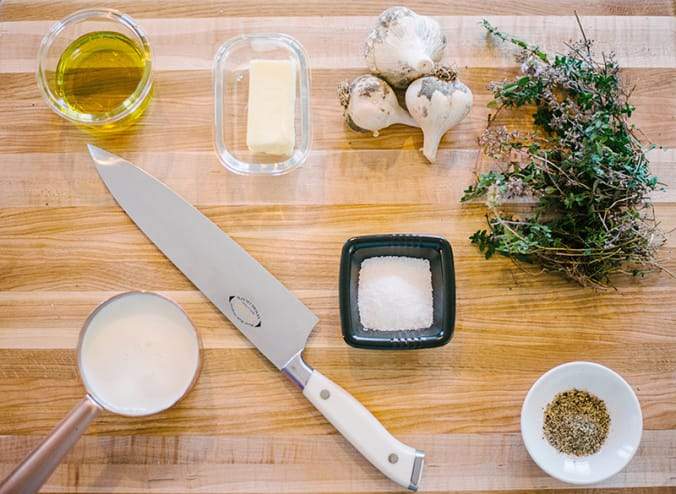
Cut your pumpkin or squash in half, down the middle from top to bottom.
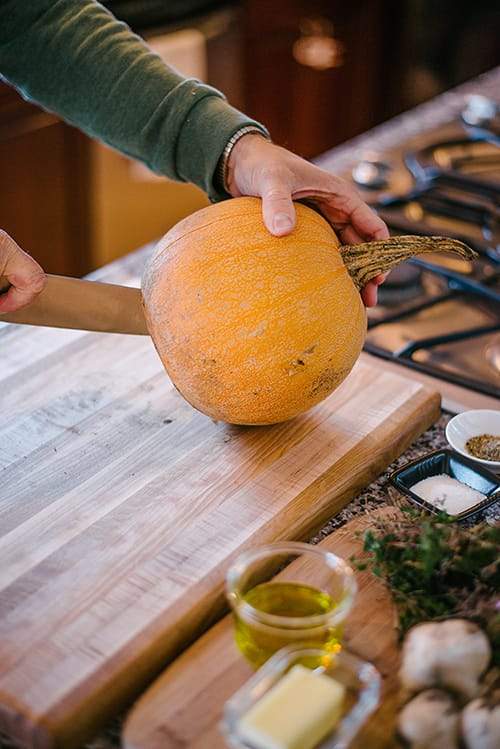
Scoop out the insides, including the seeds and fibrous pulp.
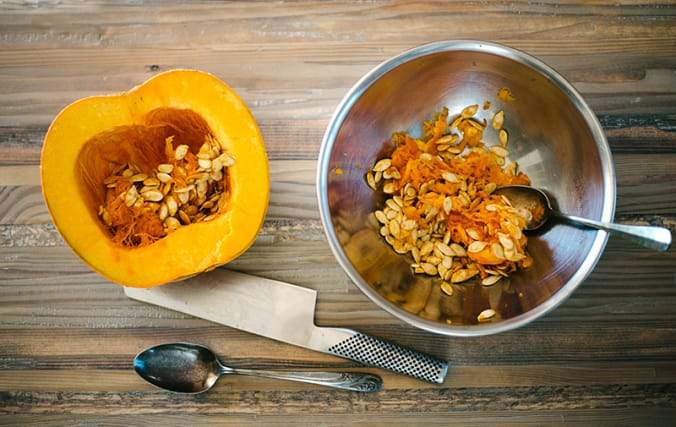
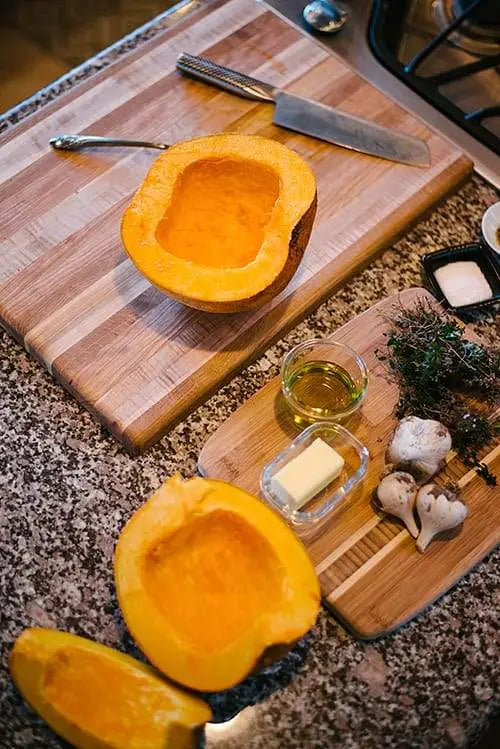
Once you've scooped the insides of your halves, clean them and rub lightly with olive oil. Sprinkle the olive oil coated insides with both salt and pepper.
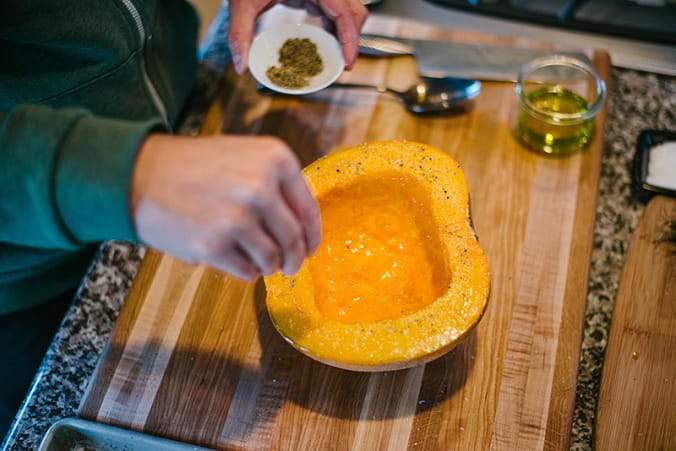
Select a generous amount of fresh thyme to stuff inside the halves.
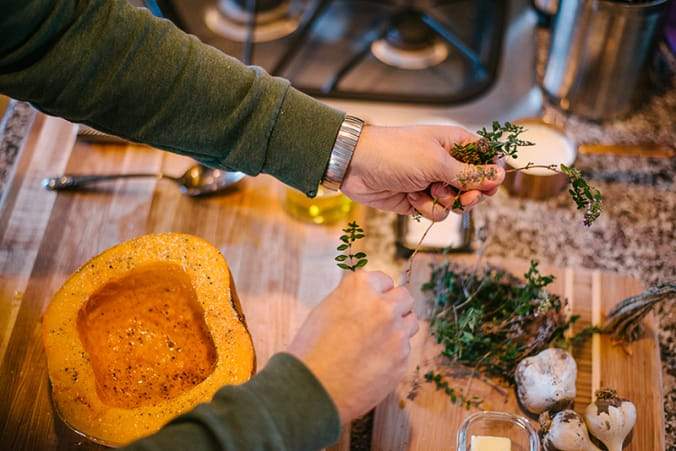
Break off 2-3 cloves of garlic from your bulb and peel off the outermost layers of skin before smashing the cloves with the flat side of your knife. This helps to release some of the flavors. Place the smashed cloves inside the pumpkin/squash halves with your fresh thyme.
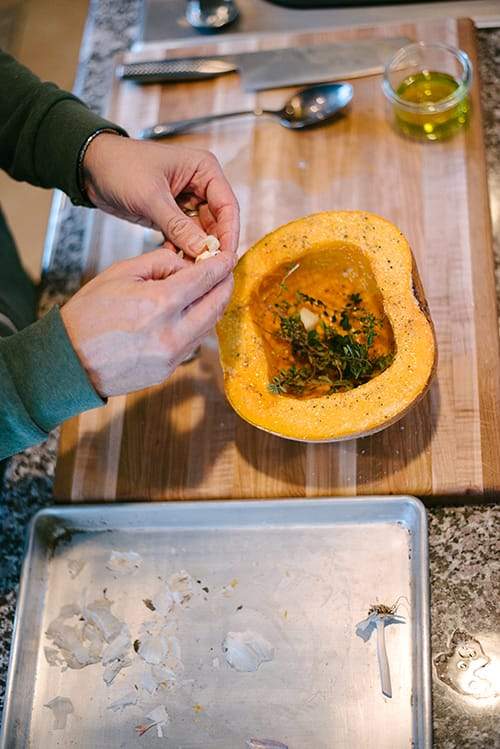
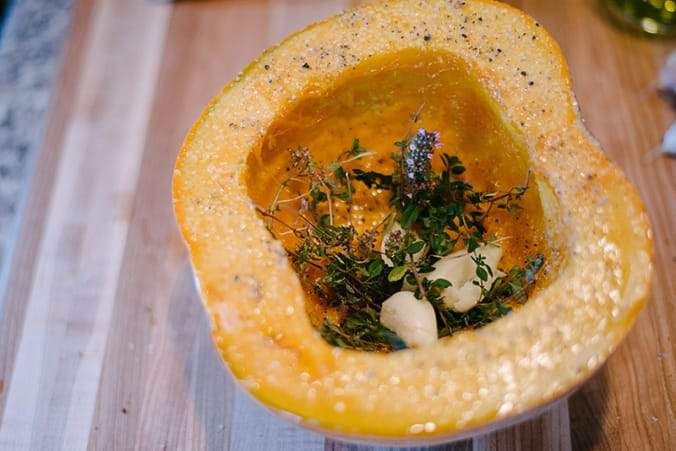
Place a flat pan against the cut side of the squash before flipping the entire thing over, leaving the squash/pumpkin face down on the pan.
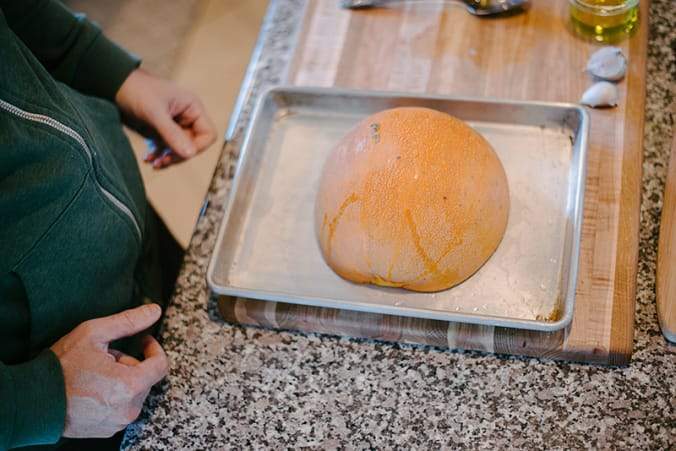
Bake your squash halves at 375° for around 35-40 minutes, depending on size. Check it periodically for softness. If you desire, you can add a small amount of water to the pan in order to create some steam.
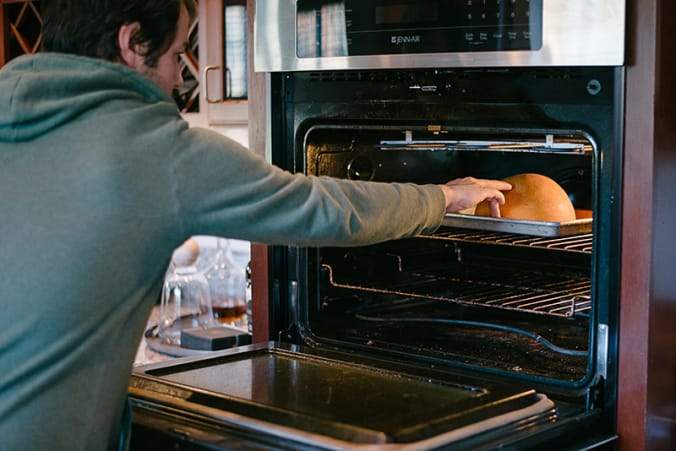
When you can press into the squash easily with a light touch, it's ready to come out of the oven.
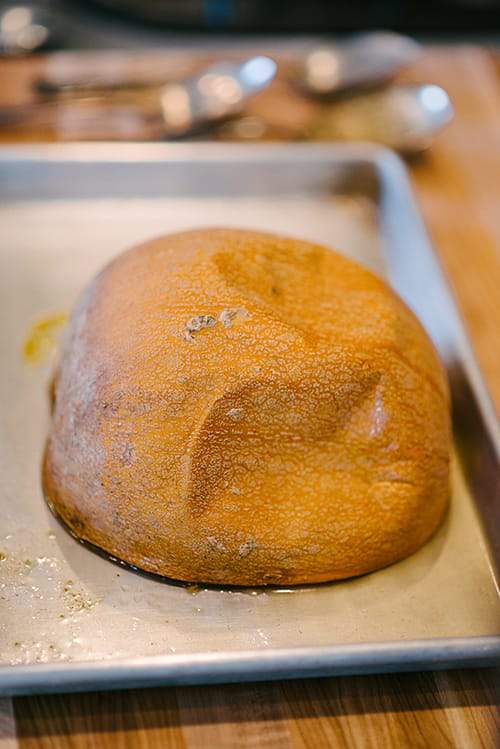
Loosen the squash from the pan by gently working a knife or small spatula underneath the edges.
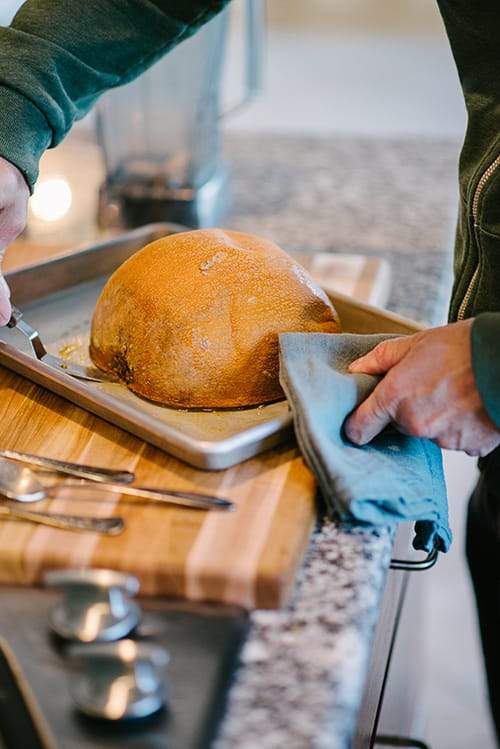
When you flip the squash over, the insides should be completely soft and moist.
Scoop the thyme and garlic cloves out of the squash. Deposit some of the thyme leaves along with the whole cloves of garlic and some of the liquid from inside the squash into the bottom of a blender.
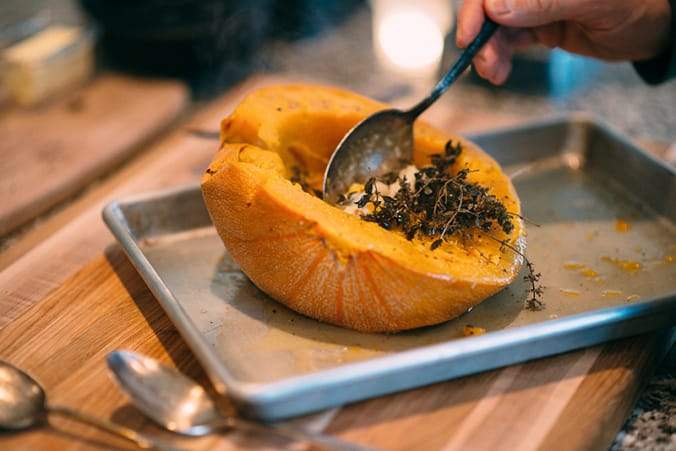
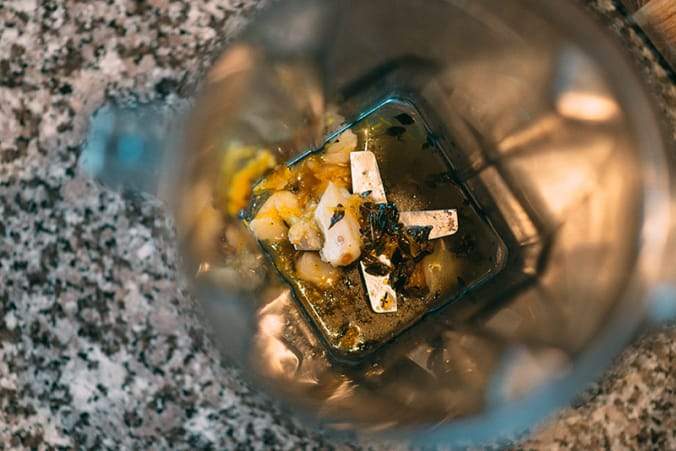
Scrape the softened flesh of the squash into the blender.
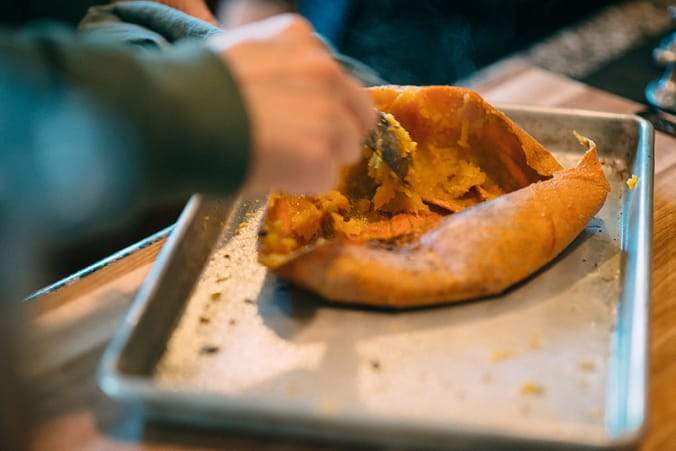
Add a small pad of butter (1-1 1/2 tablespoons).
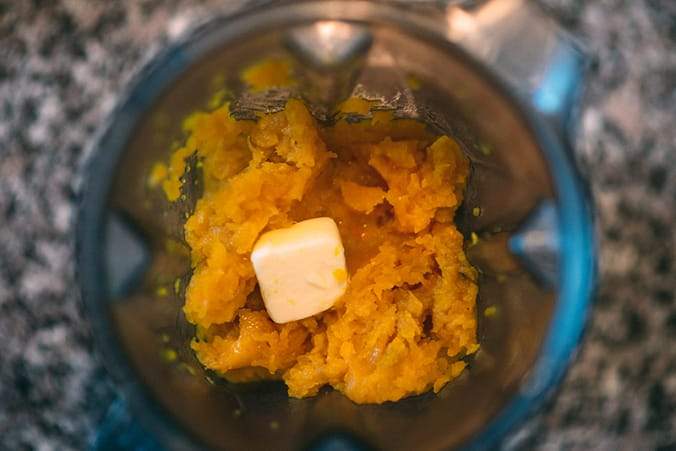
Blend and stir periodically until well blended.
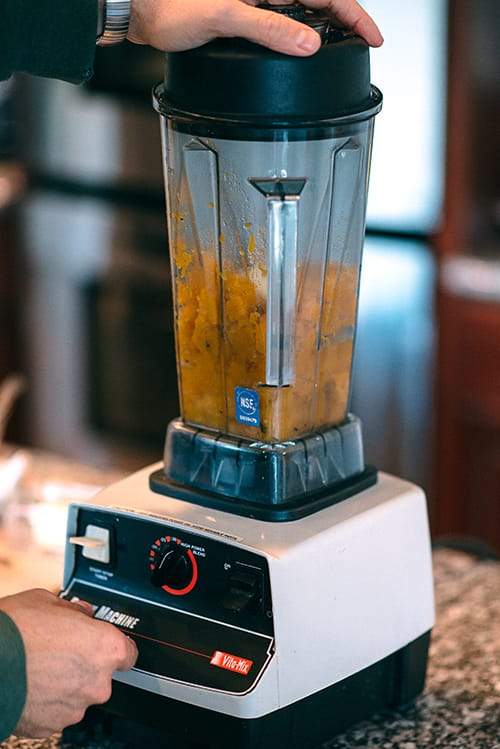
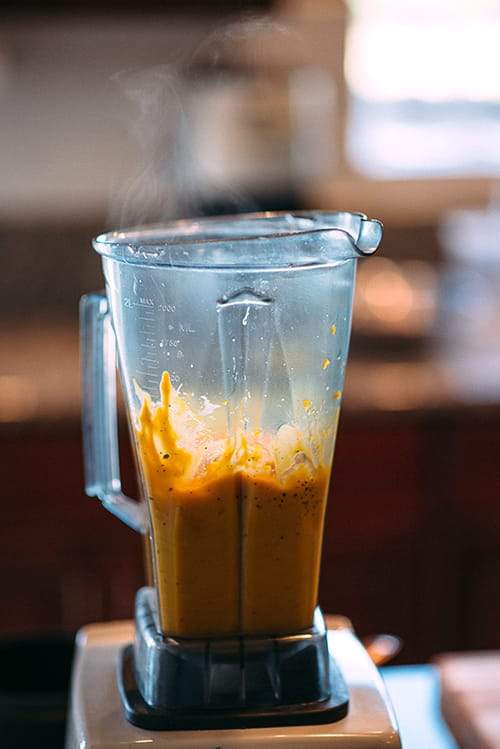
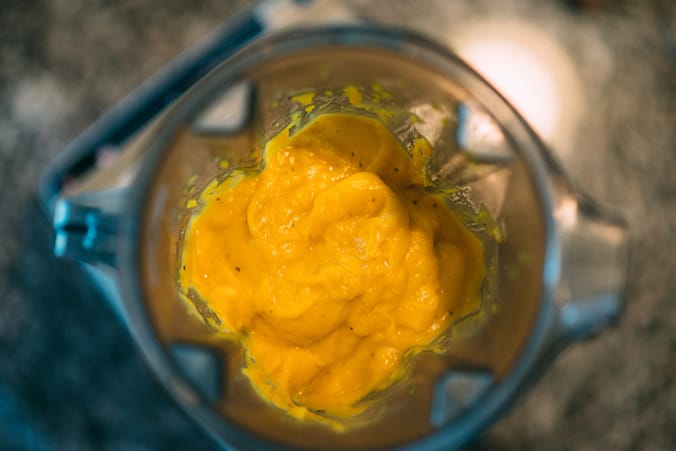
Add a small amount of cream along with salt to taste and blend until it reaches a smooth, creamy consistency.
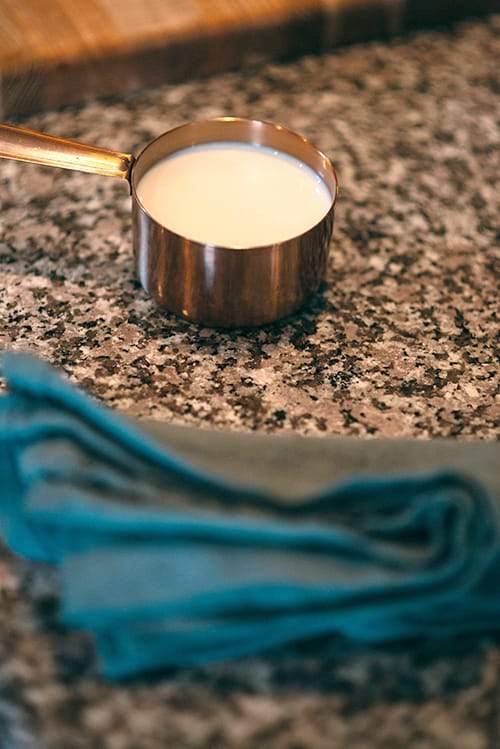
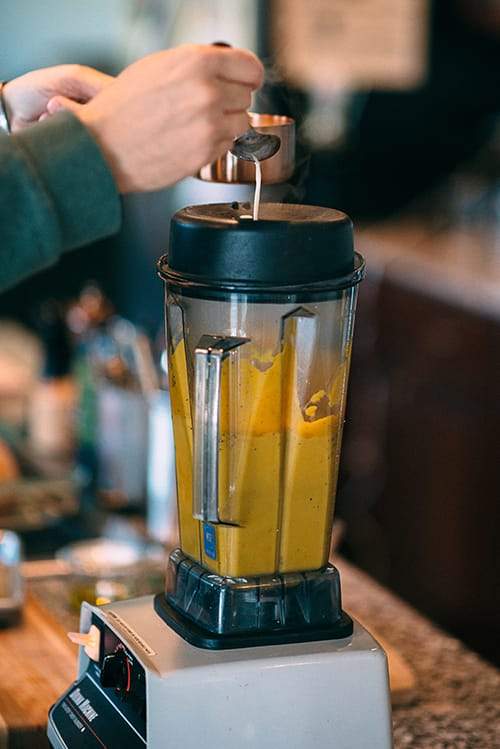
Ta-da! A creamy, flavorful puree for your use. Add a little chicken or vegetable stock to make it into a soup, or use it as a topping for a meat dish.
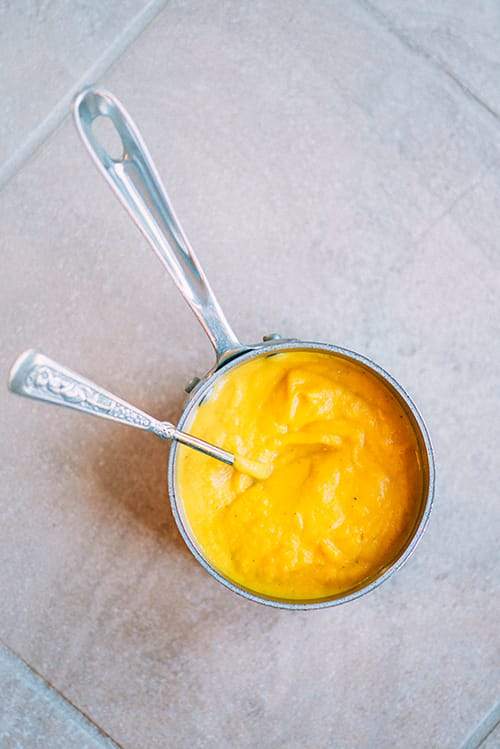
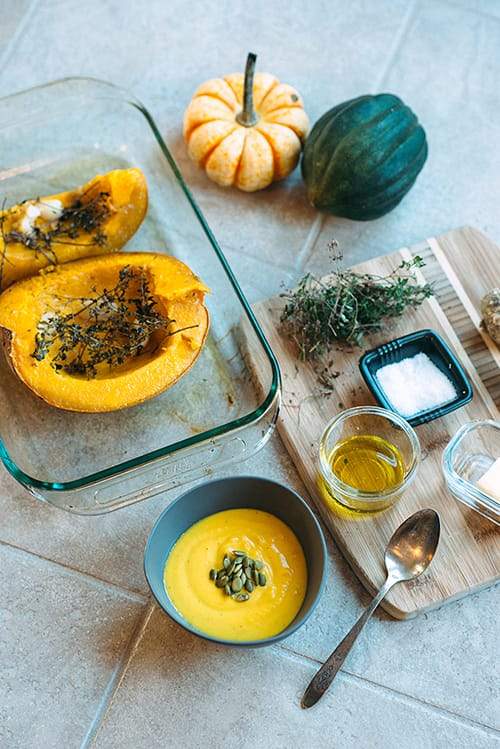
This recipe is mainly for use directly after, though if you'd like to freeze it, simply omit the butter and cream and pack into freezer containers with a small amount of space left at the top for expansion. To use, defrost and blend together with the butter and small amount of cream or vegetable/chicken stock, and it will be ready to use once more.
Here's a little background on the pumpkin we used... the Winter Luxury pumpkin!
It is said to be the best pie pumpkin, ever! The vines produce medium sized, 5-7 pound tangerine orange pumpkins that are blanketed with white netting giving it a pastel appearance. The flesh is silky smooth with just the right amount of sweetness. A must have if you like to have your own canned pumpkin in the pantry. Introduced in 1893 by Johnson and Stokes of Philadelphia, also know as Livingston Pie Squash. One pumpkin averages 2 pies and one plant produces an average of 4 pumpkins that weigh 5-7 lbs.
NOTE: If you would like to can squash or pumpkin, a different method altogether is required. Instead of being pureed, canned pumpkin or squash must be cubed. See these instructions, sourced from the USDA.
Dried Pumpkin/Squash Instructions: Wash and dry pumpkin or squash, remove seeds, stringy flesh, and skin. Cut into small pieces, 1” wide by 1/8” thick strips. Blanch over steam for 3 minutes then dip into cold water to stop blanching action, drain excess moisture. Dry in electric dehydrator. You can also dehydrate in the oven on cookie sheet, placed on low/warm (140-150 degrees) with the door propped open to allow moisture to be removed for 10-16 hours. Grinf the dried pieces in a food processor and store in an airtight jar. To reconstitute, use 1 part pumpkin to 2 ½ part water.


I used to add the thyme, garlic, butter after cooking during the blending process. This recipe is so very much better! Delicious flavor. My new and better way to cook squash and pumpkin. Much thanks.
Thanks!! Great Idea – excited to try it. I usually boil the pumpkin/squash, season it and freeze it for later. Baking just seems so much healthier all around!!
Posting just in time for my Butternut squash Thanksgiving contribution. Nice cutting board, by the way.
Great info – thank you! I especially liked the historical background and directions for drying pumpkin/ squash.
thanks for the tip on dehydrating.!